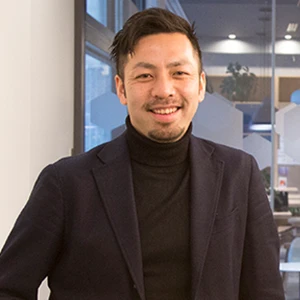The freedom of the product developer environment is the charm of Reazon. We want to make an impact on the world with product development that understands user psychology.
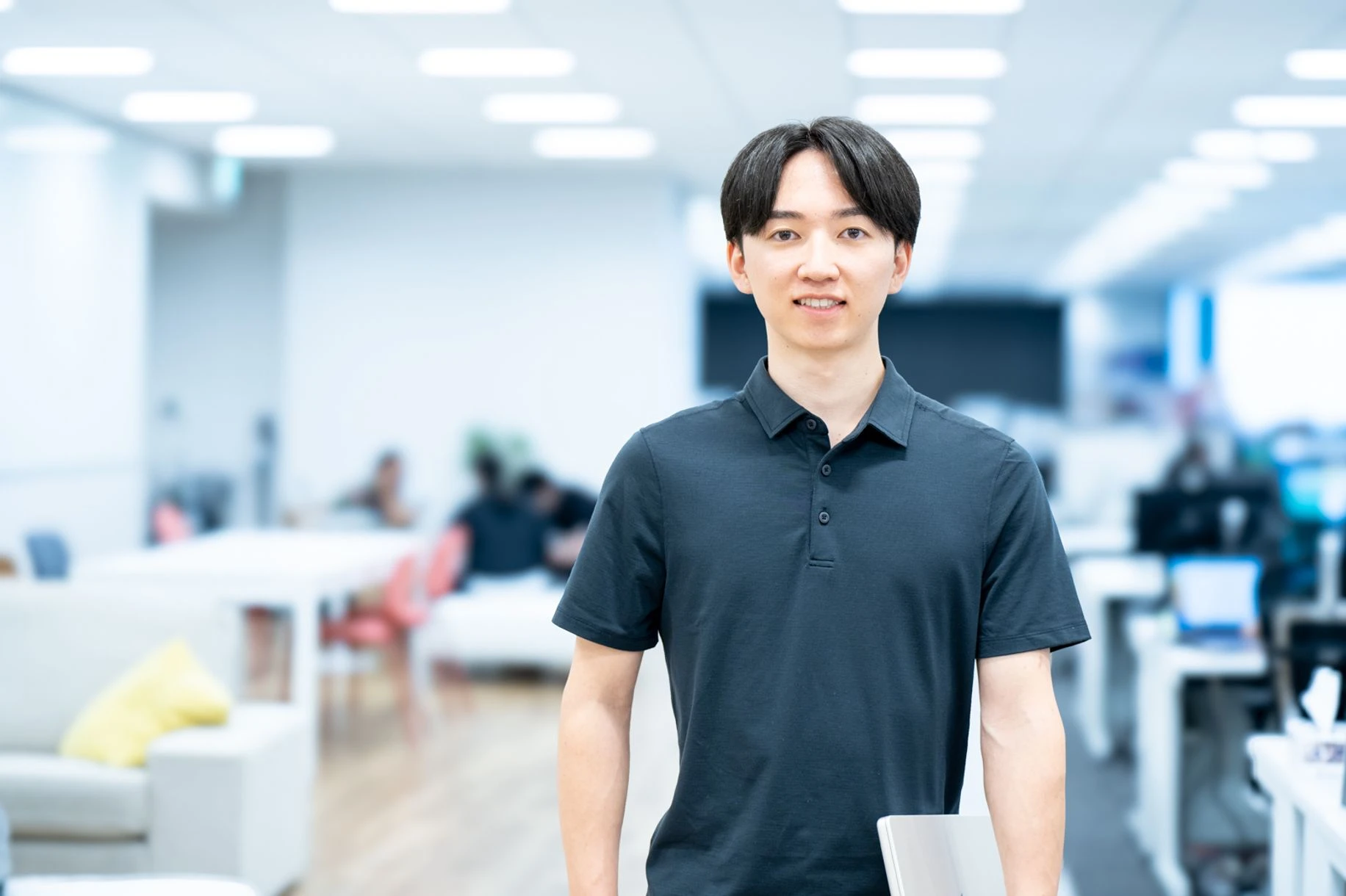
Hello, this is Takahashi from the Corporate Planning Division. This time, we had a conversation with Mr. Yamamoto, a product manager at the Human Interaction Research Institute. He took a leave of absence from Stanford University to join Reazon and take on new product development challenges. He spoke about his career so far, the projects he is currently working on, and the importance of understanding users. This article will be helpful for those interested in new business ventures, or those who want to take on the challenge of product development using innovative technology, so please take a look.
INDEX
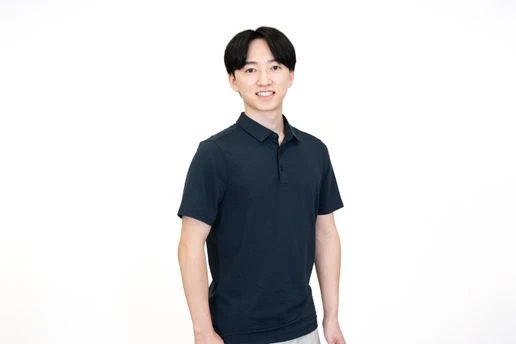
Hiroto Yamamoto Product Manager at Reazon Holdings / Human Interaction Research Institute
While studying at Stanford University, he majored in Computer Science. Before entering university, he was involved in the research and development of BCI technology, which directly connects the brain to machines, at the Neurotechnology Research Group of the National Institute of Advanced Industrial Science and Technology. At Reazon's summer internship, he developed an AI model for IoT devices aimed at pet owners. After that, he took a leave of absence from university to join the company and is in charge of developing age-tech products and caregiving support robots at the Human Interaction Research Institute. He is also involved in the operation of summer programs for students studying abroad.
Studied the technology that connects the brain to computers, and participated in Reazon's summer internship.

Mr. Yamamoto, you took a leave of absence from university to join Reazon. Could you start by telling us about your background up until you joined Reazon?
.jpg?width=160&height=160&fit=cover&format=webp&quality=90)
From third grade in elementary school to second grade in junior high school, I lived in Singapore and Beijing due to my father's job. After returning to Japan, I obtained an IB in high school, which allows applications to universities all over the world, and went on to Stanford University. Since there was a period of about half a year from high school graduation until entrance into university, I wanted to dig deeper into my interests and focused on BCI (Brain Computer Interface) technology, which directly links brain information to computers and external devices. I went to meet a professor from the National Institute of Advanced Industrial Science and Technology, who was exhibiting at the Maker Fair, and proposed that I could conduct research, and I started working as a researcher in the Neurotechnology Research Group. Originally, it was supposed to be only for half a year, but due to the pandemic at the time of university entrance, I delayed my entrance by a year and spent a total of a year and a half researching at their research lab.

It seems that you were involved in research even before you entered university! Why were you interested in BCI?
.jpg?width=160&height=160&fit=cover&format=webp&quality=90)
I learned about BCI from a press release by Elon Musk and others during my examination period. The SF-like technology of connecting brain information and computers would be amazing if it becomes commonly used in a few decades, and I felt that people's lives would change significantly, so I wanted to deeply research it.

Indeed, it's research that would seem to flip common-sense on its head. What kind of research were you doing during that time?
.jpg?width=160&height=160&fit=cover&format=webp&quality=90)
I was developing a device to communicate intentions by obtaining brain information from people who cannot convey information themselves due to ALS or stroke, using technology that supports communication by directly decoding brain waves. I wanted to challenge the effort to commercialize based on research, so I set up a startup and participated in medical accelerator programs such as Research Studio, and was able to win the overall championship.

It's research with great potential! What kind of studies and activities are you doing at Stanford University?
.jpg?width=160&height=160&fit=cover&format=webp&quality=90)
At university, I am majoring in computer science and studying the field of AI. Personally, I am interested in human interaction, which is the study of the interaction that occurs between computers and people. Outside of academics, I founded the Stanford Poker Club and am active as a club president, and I also belong to the Stanford Philharmonia as the first violin.

You seem to be diligently involved in both your studies and extracurricular activities. Can you tell us what led you to join Reazon?
.jpg?width=160&height=160&fit=cover&format=webp&quality=90)
While I was in college, I was looking for a summer internship, and Reazon contacted me. I had a casual online interview for about 30 minutes, which was the trigger. I heard that Reazon is unlisted, has a cash flow, and is using it to develop new businesses, aiming to be "the best in the world". I felt it was a genuinely fun company. I was originally interested in startups and entrepreneurship, but I was attracted to the environment where I could launch a new business within the company and focus on product development with the employees. So, I decided to work for about three months as a summer intern.
.jpg?width=1832&height=1832&fit=inside&format=webp&quality=90)
I was fascinated by the environment where I could freely engage in product development.

What kind of work did you do during your summer internship?
.jpg?width=160&height=160&fit=cover&format=webp&quality=90)
In the EC business department, I developed AI models using image recognition and voice recognition to be installed in IoT devices for pet owners. I was given the mission to create features that could be used in the future using AI, so I first developed a pet identification feature and an object detection feature to quantitatively evaluate the range of behavior. The pet IoT device I was developing at the time had a part where the camera would film the pet for dozens of hours and the user could review the massive amount of data on the app. Originally, users had to search for the scenes they were interested in on their own. However, I thought that they were using smart devices precisely because they were busy, so I also developed a feature to create highlights of interesting moments throughout the day.

You seem to have developed a very practical feature. How did you feel about participating in Reazon's summer internship?
.jpg?width=160&height=160&fit=cover&format=webp&quality=90)
I realized that I love product development. It was fun to develop not only implementing AI models, but also considering what the UI would be like when actually used and how users would behave. For the pet IoT device, even in the midst of a busy day, I thought that users could easily look back on their pet's day and would want to post it on SNS, so I solidified the image of the app, created documents, and proposed it to the team. Also, I felt that the environment where I could freely develop my ideas was a very good match for me.

You were attracted to an environment where you could freely challenge yourself. After the summer internship, how did you come to join the company?
.jpg?width=160&height=160&fit=cover&format=webp&quality=90)
After the internship, I went out to eat with CEO Watanabe and others several times to discuss the new business proposal. There, I proposed that I wanted to proceed with the proof of concept as my own project, not as an intern. After experiencing the internship, I went back to college once, but Reazon is an environment that is high in freedom and has a wide range of decision-making, which was optimal for me, so I decided to take on the challenge, wanting to make the most of this opportunity. So, I approached a friend from college and we worked on a new business proposal together, proposed it to CEO Watanabe, and decided to actually start it after joining the company.
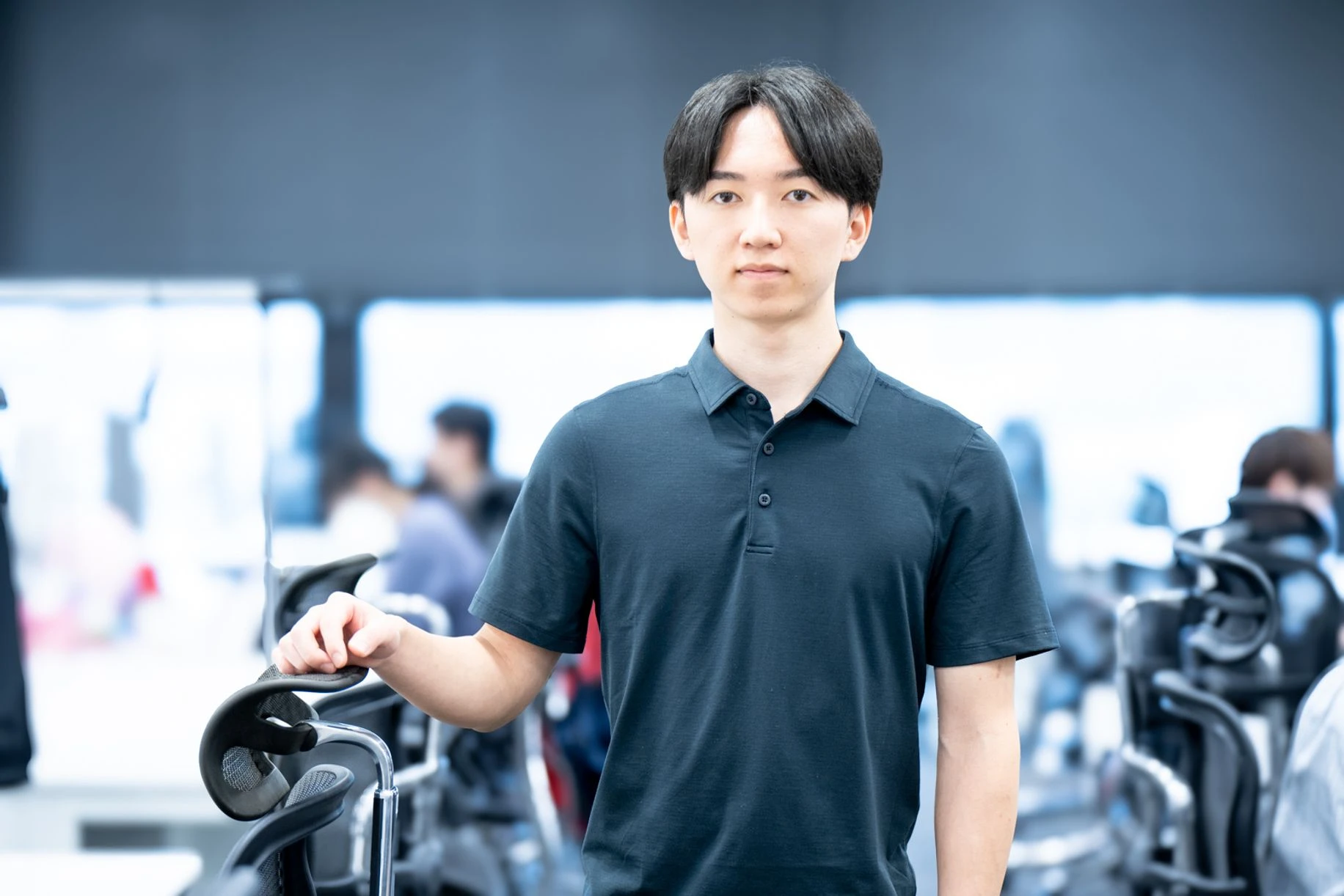
To change the world through user-first product development

You are currently affiliated with the Human Interaction Research Institute. What kind of things are you researching and developing?
.jpg?width=160&height=160&fit=cover&format=webp&quality=90)
The Human Interaction Research Institute is a department within the group that is aiming for a long-term major home run. I'm working on the development of AgeTech products in a department that researches technologies to recognize voice, gaze, facial expressions, and movements of hands and body, which are the most natural means of intention transmission for humans. My grandfather uses a hearing aid, and I wanted to solve the problem of it being hard to hear in a lively environment and not being able to interpret even if he can hear me or not. I thought that if I combined voice recognition with lightweight, seamless AR glasses, I could solve this unique problem. So, I proposed a lightweight head-up display device that could be used as an alternative to hearing aids using a voice recognition technology called ReazonSpeech.

What does a product that combines voice recognition and AR glasses even look like?
.jpg?width=160&height=160&fit=cover&format=webp&quality=90)
The idea is that when you wear technology that is integrated with glasses or another discreet lightweight device, you can display voice as subtitles in real time. Hearing aids work by lowering or raising certain frequencies to make voices easier to hear, and while there are high-precision, high-performance ones available, it is difficult to completely separate noise with voice processing alone. For example, in lively environments like restaurants or parks, or when speaking in front of many people using a microphone, it is often difficult to hear with a hearing aid. The device we are aiming to develop combines image recognition that captures mouth movements and voice recognition to transcribe into subtitles with high accuracy. Initially, we are targeting hearing aid users, but we foresee the possibility of it being used in a wide range of situations, such as simultaneous interpretation in the future.

It seems like this would be an innovative product not only for people with hearing difficulties, but also for the general public! How did you take action towards establishing the proof of concept?
.jpg?width=160&height=160&fit=cover&format=webp&quality=90)
I thought about the fastest way to verify the proof of concept, and so I ran to the founder of a startup in the Bay Area, and borrowed one of the few prototype devices on the condition that we would collaborate if the research went well. The CEO was a Stanford graduate with hearing difficulties, and he was developing a product looking at the American hearing loss market. I argued that if we could succeed in AgeTech products in Japan, where the population of elderly people is most prevalent, we could expand our know-how to other countries where aging will accelerate in the future, and he agreed to work together. I brought that device back to Japan and went around nursing homes, having elderly people try it and conducting multiple hearings.

Did you notice anything while conducting hearings at nursing homes?
.jpg?width=160&height=160&fit=cover&format=webp&quality=90)
I found that the psychological hurdle of wearing a device on the face was higher than I had imagined. Hearing aids are hardly noticeable when worn, but even so, wearing them means admitting that "I have become hard of hearing", and there was a psychological barrier to that. The AR glasses themselves were well received, but I felt that the psychological hurdle of how they would be seen by others was still high. I learned that we need to make them even lighter and less noticeable, or design them in such a way that they stand out but do not create a psychological barrier. In order to make a product that is widely accepted, we are focusing on deeply understanding user psychology.

By actually visiting the potential users, you seem to have gained insights that you wouldn't have known prior!
.jpg?width=160&height=160&fit=cover&format=webp&quality=90)
Yes. In a team focused on research and development, we tend to be tech-first, but I believe that creating a good product is the top priority. Instead of looking for where new technology can be used, we first think about how to solve this problem, and from there we choose the appropriate technology. To do this, understanding user psychology is essential.
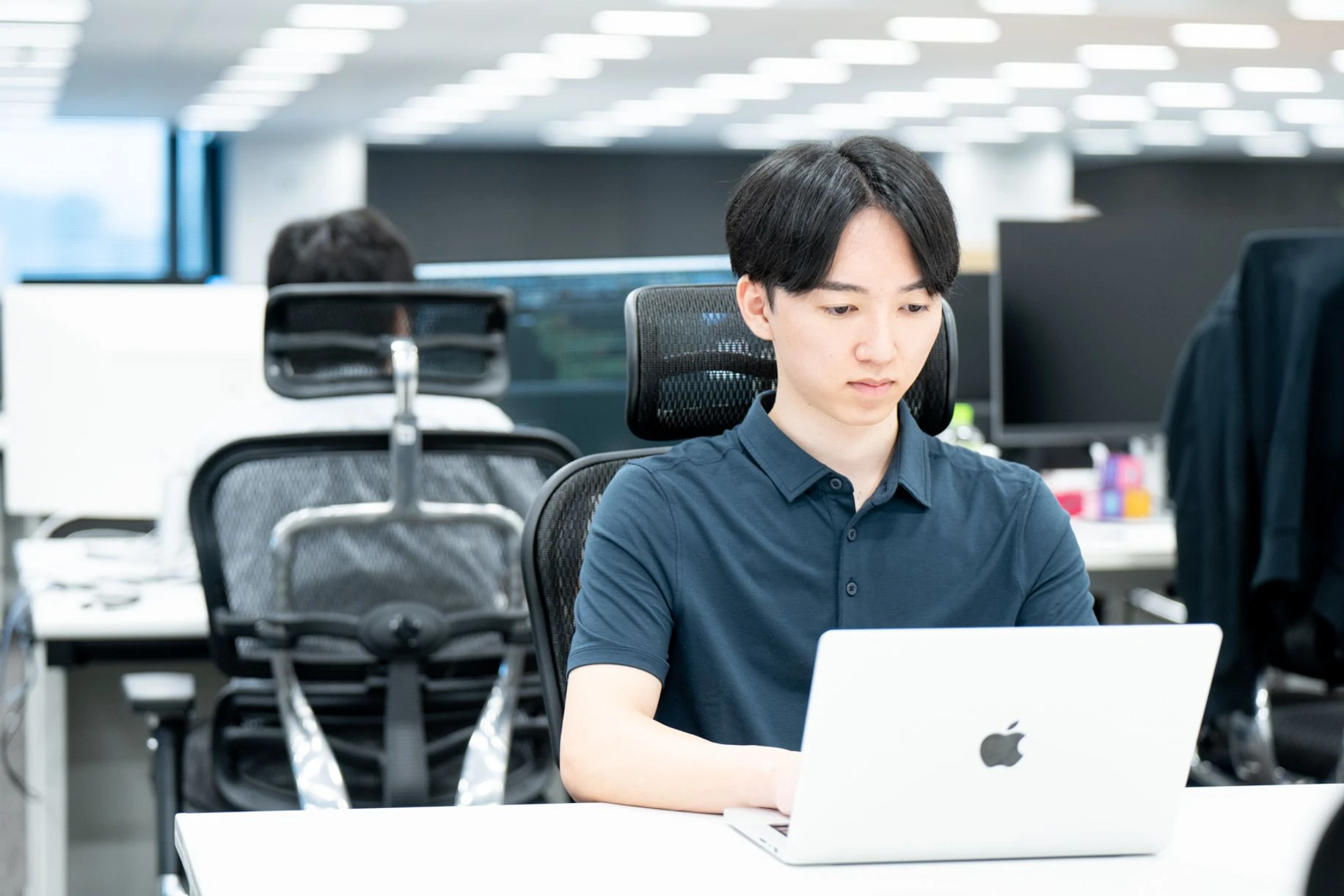
Intern with the best and brightest to increase Reazon's presence

Are there any other projects you are currently working on?
.jpg?width=160&height=160&fit=cover&format=webp&quality=90)
I am also involved in the development of care support robots for nursing homes. As multi-modal AI that can process various information such as text, voice, and images becomes widespread, the strength of robots is that they can interact with people and things physically, move them, and touch them. If we are to provide some kind of feedback based on the information we get from people, we need an ecosystem for exchanging information. One of them is a robot that can interact directly with people, and that's why we are focusing on the development of IoT devices in the AgeTech field. We are also putting effort into robot development with the aim of building an ecosystem where people and devices can seamlessly exchange information.

You are working towards your goals one development at a time! I heard that you are also involved in running a summer program for overseas students.
.jpg?width=160&height=160&fit=cover&format=webp&quality=90)
When I was developing a product in a small team called the new business division, I thought it would be difficult to gather development personnel all at once, so I proposed to proceed with development during the summer program. We hired from the world's top universities, and while elevating Reazon's presence there, we gathered a large number of engineers to work on product development together.

How did you gather the students?
.jpg?width=160&height=160&fit=cover&format=webp&quality=90)
We gathered a total of 430 applications by sponsoring TreeHacks, the largest hackathon in the United States hosted by Stanford University, and serving as the main sponsor for a poker tournament jointly hosted by Stanford University and the University of California, Berkeley. From there, we hired 13 engineers specializing in hardware development and AI and machine learning.

You've gathered some very talented people! What kind of summer program do you plan to have?
.jpg?width=160&height=160&fit=cover&format=webp&quality=90)
Since all the students are able to take their own initiative, instead of assigning projects and tasks in detail and proceeding with development, we plan to give a large mission to a team of 4-5 people and let them freely challenge product development like a startup. If the resources and environment are prepared, the rest can be developed autonomously while cooperating with each other, so we have prepared a rich budget and a space for developing products. I'm looking forward to working on projects with these talented individuals in the future.

I can't wait to see what kind of product will be created. Next, please tell us about the rewarding aspects of your job.
.jpg?width=160&height=160&fit=cover&format=webp&quality=90)
The rewarding part is being able to take initiative and responsibility for what I am interested in, and move the project forward. Thinking about what kind of product to make, coming up with ideas like "this is good, but that's also good", while cooperating with team members, and immersing myself in development is the most enjoyable to me. From team building to development, I can't thank everyone enough for the environment that supports me fully in starting challenges from scratch.

Finally, please tell us about the value of Reazon for you!
.jpg?width=160&height=160&fit=cover&format=webp&quality=90)
I think the appeal is that all employees share the stance of continuing to grow towards a big vision. Even when taking on new challenges, everyone has the same end-goal, so they support me with a clear notion of "Is this a necessary initiative to achieve significant growth?". Therefore, it is an environment where it is easy to ask for cooperation and easy to advance projects. I want to continue to take on various projects, implement them at the fastest speed, and accomplish them to the point where they have an impact on society.

We can't take our eyes off your future activities, Mr. Yamamoto! Thank you for sharing your story!

Please feel free to contact us about REAZON’S content, interviews, and press relations.
CONTACTIf you are interested in REAZON HOLDINGS, please check the recruitment site for more information.
RECRUITIn an organization dedicated to achieving the top spot in the world, there lies value in taking on significant challenges
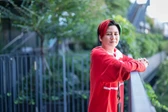
Try to accomplish things by yourself. If you have that spirit, you can contribute even if you have no experience.

